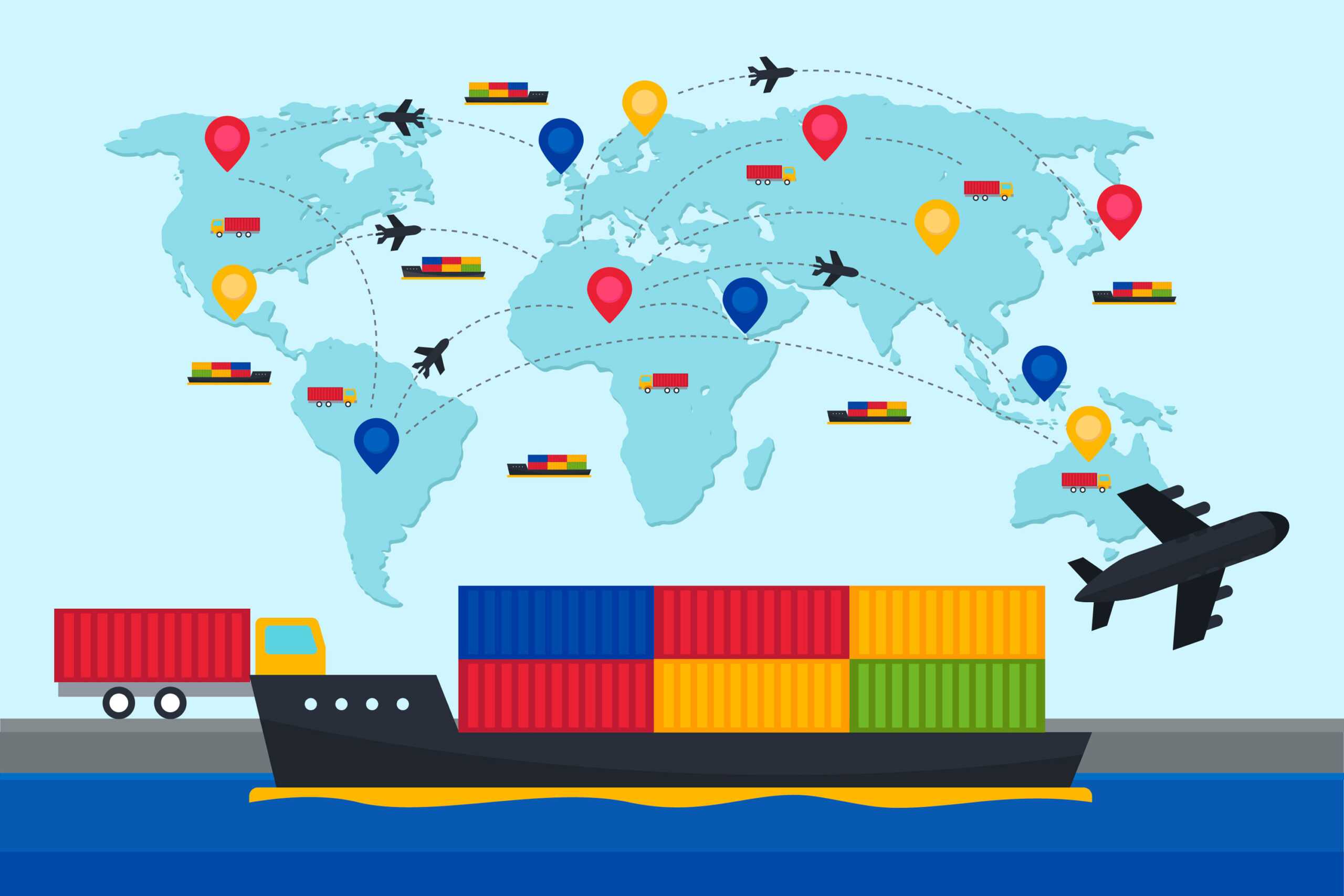Global instability from financial crises, the pandemic, and geopolitical conflicts makes traditional planning insufficient. In this context, ECAs are crucial for the future of global trade, providing financial support and risk management to help businesses navigate uncertainties and seize opportunities. Considering various scenarios for the 2030s is essential for ECAs to anticipate risks and make strategic decisions beyond the short term.
Geopolitics are reshaping the world
Geopolitics significantly impact trade policies, market stability, and global supply chains, making them crucial for future planning. A return to global cooperation seems unlikely due to stagnant WTO reforms, ongoing conflicts, and rising protectionism. Should this occur, it might lead to historic highs in global trade as sanctions and conflicts recede.
A more likely scenario involves increased regional conflicts, which would maintain overall global trade stability but shift trade flows and cause frequent supply shocks. This would strain commodity markets, complicate capital flows, and hinder global talent mobility.
Currently, the dominant trend is multipolar rivalry. With NATO’s revival, BRICS expansion, and the China-Russia alliance, competing global poles are forming their own norms and trade platforms. This would stabilise global trade but shift trade lanes and limit access to capital, resulting in polarised innovation and climate policies.
Key Emerging Trends for ECAs to Consider
Observing geopolitical changes, we can identify trends that are altering the trajectory of global trade. BCG’s analysis of over 500 million data points, combined with macroeconomic and geopolitical factors such as GDP growth and free trade agreements, shows that distinct global trade poles are forming, indicating a multipolar world.
North America’s Growing Trade Hub: Forecasts predict a $466 billion increase in trade between the U.S., Canada, and Mexico over the next decade. U.S. policies like the Infrastructure Investment and Jobs Act, the CHIPS Act, and the Inflation Reduction Act are bolstering the USMCA and encouraging reshoring and nearshoring through incentives such as “Buy North American.”
Shifts in Trade Flows: Trade between the U.S. and China is expected to decline by $197 billion by 2032 due to ongoing tensions. In contrast, trade between China and Southeast Asia is projected to rise by $616 billion, with additional growth in trade between Southeast Asia, Japan, and South Korea amounting to over $1.4 trillion. Meanwhile, the BRICS bloc is expanding, with Russia increasing trade with China and India as its trade with the EU decreases. BRICS+ is set to play a major role in global trade, oil production, and population distribution.
ECAs: Adapting to Global Trade Changes
ECAs play a crucial role in shaping the future of global trade, making it essential to understand emerging trends for effective strategy adaptation. As global trade shifts and new trade poles emerge, analysing and adjusting strategies to manage risks is vital. Monitoring these evolving dynamics and adapting risk management practices accordingly will be key. By leveraging insights from these trends, ECAs can refine their strategies and provide better support to clients in a rapidly changing trade environment.
Wiserfunding Solutions: Stay Ahead of Trends
At Wiserfunding, we empower export credit agencies to navigate the complexities in global trade with confidence. Our tools provide a comprehensive understanding of creditworthiness across borders, enabling ECAs to make timely and informed decisions in a rapidly evolving trade landscape. As global trade continues to change, the role of ECAs will become increasingly important, ensuring that trade flows remain steady and robust despite future challenges.
Learn more about our solutions for Export Credit
Sources:
https://www.bcg.com/publications/2024/jobs-national-security-and-future-of-trade
https://fortune.com/2024/08/07/geopolitics-4-potential-scenarios-map-world-trade-goods-next-decade-bcg-politics/?abc123
SIMILAR POSTS

21 August 2024
How AI Transforms Lending: Insights for SME Finance
How AI Drives Our Solutions at Wiserfunding At Wiserfunding, AI is at the heart of our cutting-edge solutions. Our [...]

14 August 2024
Export Credit Agencies in a Global Trade Landscape – Review Q1 2024
The latest Global Trade Update (July 2024) from UNCTAD reveals a landscape of recovery and change in global trade. [...]

8 August 2024
Zombie Firms: The Transformative Impact of Private Credit and Bankruptcy Reforms
The rise of zombie firms is a growing concern in today's economy. Extended low interest rates and economic disruptions [...]



